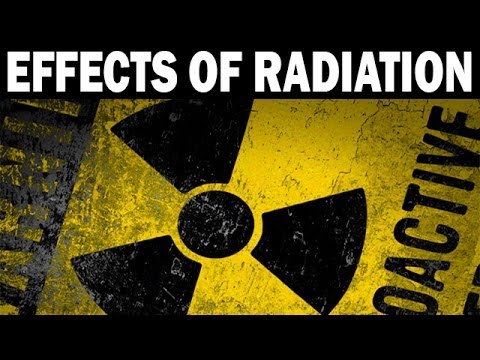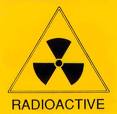(McClatchey) -In testimony before a Senate subcommittee, Ken Cook spoke passionately about 10 Americans who were found to have more than 200 synthetic chemicals in their blood.
The list included flame retardants, lead, stain removers, and pesticides the federal government had banned three decades ago.
“Their chemical exposures did not come from the air they breathed, the water they drank, or the food they ate,” said Cook, president of the Environmental Working Group, a national advocacy group.
How did he know?
The 10 Americans were newborns. “Babies are coming into this world pre-polluted with toxic chemicals,” he said.
More than 80,000 chemicals are in use today, and most have not been independently tested for safety, regulatory officials say.
Yet we come in contact with many every day - most notably, the bisphenol A in can linings and hard plastics, the flame retardants in couches, the nonstick coatings on cookware, the phthalates in personal care products, and the nonylphenols in detergents, shampoos, and paints.
These five groups of chemicals were selected by Sonya Lunder, senior scientist with the Environmental Working Group, as ones that people should be aware of and try to avoid.
They were among the first picked in the U.S. Environmental Protection Agency’s recent effort to assess health risks for 83 of the most worrisome industrial chemicals.
Lunder’s basis was that they are chemicals Americans come in contact with daily. You don’t have to live near a leaking Superfund site to be exposed. They are in many consumer products, albeit often unlabeled.
Studies by the Centers for Disease Control and Prevention and others have shown that they are detectable in the blood or urine of many of us.
Plus, much data exist showing their harm. “We have an incredible body of evidence for all these chemicals,” she said. “In all cases, we have studies linking human exposure to human health effects.”
Lunder and others see these five as symbolic of the government’s failure to protect us from potential - or actual - toxins.
“A lot of people presume that because you’re buying something on the store shelf … someone has vetted that product to make sure it is safe,” said Sarah Janssen, senior scientist with the Natural Resources Defense Council, another advocacy group. “Unfortunately, that’s not true.”
Some chemicals are regulated through laws governing, say, pesticides or air quality.
But most are regulated through the Toxic Substances Control Act, or TSCA. It has been identified as the only major environmental statute that has not been reauthorized, or revised, since its adoption in the 1970s.
Since 2005, U.S. Sen. Frank R. Lautenberg, D-N.J., has worked to change that. In 2010, he introduced the first version of the Safe Chemicals Act, which would require companies “to prove their products are safe before they end up in our home and our children’s bodies,” he said recently by email.
A later version, with 27 co-sponsors, passed out of committee in July. He has vowed to keep fighting for a vote in the full Senate.
The American Chemical Council, a trade association representing large chemical manufacturers, declined comment, although it too has called for reform.
“Public confidence in TSCA has diminished, contributing to misperceptions about the safety of chemicals,” council president Cal Dooley said in 2011 testimony. But he said the proposed law would cripple innovation in fields from energy to medicine. It would “create an enormous burden on EPA and on manufacturers with little benefit by requiring a minimum data set for all chemicals.”
EPA officials declined comment, but in a series of appearances before the Senate subcommittee on the environment, staffers repeatedly said the current law is not protecting Americans.
In July, Jim Jones, acting administrator of EPA’s office of chemical safety, said that “with each passing year, the need for TSCA reform grows,” noting that it had “fallen behind the rapidly advancing industry it is intended to regulate.”
When TSCA was passed, it grandfathered in, “without any evaluation,” the 62,000 chemicals in commerce that existed before 1976, Jones said.
He noted that in the 34 years since TSCA was passed, the list of chemicals has grown to 84,000, and EPA has been able to require testing on only about 200 of them.
Also, the agency has regulated or banned only five.
An oft-mentioned case of regulatory failure is that of cancer-causing asbestos. In 1989, “after years of study and nearly unanimous scientific opinion,” Jones said, the EPA banned it.
Two years later, a federal court overturned most of the action because the EPA had not chosen the least burdensome control on industry, as required.
The court ruled that old asbestos uses could not be revived. New uses were prohibited. But current uses could remain.
Adam Finkel, executive director of the University of Pennsylvania Program on Regulation, said that Europe leads the U.S. in chemical testing and regulation. There, officials put the onus on the makers to prove a chemical is safe.
Meanwhile, the science keeps outpacing the rules.
“The real issue of TSCA reform is that science is not what it was 30 or 40 years ago,” said Linda Birnbaum, head of the National Institute of Environmental Health Sciences.
In the past, she said, “we were looking almost exclusively at visible birth defects. We were concerned with cancer.”
Researchers are now looking at chemicals’ effects - some extremely subtle - on numerous other conditions, including reproductive development and disorders, diabetes, heart problems, asthma, autism, even obesity and learning disorders.
Paradigms have evolved so that researchers can study concurrent exposure to more than one chemical, as happens in real life. Toxicology has grown from a descriptive science of what has occurred to a predictive one.
Of the five chemicals identified by Lunder, flame retardants have figured prominently in recent research studies.
In late November, researchers led by Duke University chemist Heather Stapleton showed that a flame retardant removed from children’s sleepwear as a suspected carcinogen was still in lots of couches.
More than 40 percent of the 102 couches bought between 1985 and 2010 had the chemical, called tris, according to the study in the journal Environmental Science & Technology.
That issue also published a study by the Silent Spring Institute, an advocacy group in Massachusetts, that traced the path of toxic flame retardants from couches to household dust to the bodies of children, who often crawl on floors and put fingers in their mouths.
Officials say children’s small size and rapid growth may make them more vulnerable to toxins.
The research showed that most homes had levels of at least one flame retardant that exceeded a federal health guideline.
One of the latest health studies of PBDE flame retardants, in November’s Environmental Health Perspectives, found that fetal or infant exposure could adversely affect a child’s fine-motor coordination, attention span, and IQ.
A Chicago Tribune investigation, published in May, found that many flame retardants do not even provide meaningful protection from fire.
Bisphenol A, another chemical facing scrutiny, held promise because it could be used to make hard, clear plastic and protective liners for canned foods and beverages.
Noting thousands of studies examining its effects, the National Resources Defense Council petitioned the Food and Drug Administration to limit its use as a food additive, which would also preclude its use in packaging.
The FDA denied the petition last year, although many manufacturers have removed it from baby bottles and sippy cups. Some, including Campbell’s Soup, say they plan to shift to alternatives.
THE EPA’S MOST WORRISOME TOXINS
Bisphenol A (BPA)
Uses: It hardens clear “polycarbonate” plastics, which are used in compact discs, plastic dinnerware, eyeglass lenses, toys, beverage bottles, and impact-resistant safety equipment. Also used in the linings of food cans, in dental sealants, and on cash register receipts.
Health concerns: BPA is considered estrogenic and has been shown to affect the reproductive systems of laboratory animals. BPA also has been linked to many other disorders. Potential harm is considered highest for young children, because their bodies have immature systems for detoxifying chemicals.
How to limit exposure: Limit consumption of canned foods and canned liquid baby formula. Avoid plastics marked with the recycling code “7.” Avoid microwaving baby food or drinks in plastic containers.
Nonylphenols, including nonylphenol ethoxylates
Uses: Laundry detergents, shampoos, household cleaners, latex paints.
Health concerns: NPs have been detected in human breast milk, blood, and urine, and are associated with reproductive and developmental effects in rodents. Fish exposed to low levels can become feminized. EPA concerns center mostly on industrial laundry workers.
How to limit exposure: This is difficult. Experts say to avoid using detergents, cleaning agents, and other products that contain nonylphenols, but many times they are not labeled. They recommend calling the manufacturer and asking. Some organizations, including the Environmental Working Group, publish guides to safer cleaning products.
PFCs (perfluorinated chemicals)
Uses: Widely used water, grease, and stain repellents. Contained in the coatings of nonstick cookware. Used to greaseproof paper and cardboard food packaging. Added to carpeting and clothing for stain protection.
Health concerns: They are bioaccumulative in wildlife and humans, and are persistent in the environment. They are toxic to laboratory animals and wildlife. The EPA says that “to date, significant adverse effects have not been found in the general human population. However, given the long half-life of these chemicals in humans (years), it can reasonably be anticipated that continued exposure could increase body burdens to levels that would result in adverse outcomes.”
How to limit exposure: Avoid nonstick cookware. Avoid highly processed and fatty foods. Skip optional stain treatments. Use real plates instead of paper. Cook popcorn on the stove, not in microwave bags.
Flame retardants, including PBDE
Uses: To prevent the spread of fire, many versions of these chemicals are added to upholstered furniture and mattresses - including many products for babies - plus textiles, plastics, electronics, wire insulation.
Health concerns: PBDEs are not chemically bound to plastics or other products in which they are used, making them more likely to leach out. “Certain PBDEs are persistent, bioaccumulative, and toxic to both humans and the environment,” the EPA states. Concern is highest for children, who might crawl on the floor, get dust containing PBDEs on their hands, and then put their hands in their mouths.
How to limit exposure: PBDEs are being phased out, so beware of old foam items, which are most likely to contain PBDEs. Use a vacuum with a HEPA filter. Clean carefully after removing old carpet and padding. When dusting, use a damp cloth or a cloth with microfibers that will trap and hold the dust better.
Phthalates
Uses: They make plastics more malleable, and are found in vinyl shower curtains, toys, vinyl flooring. They help lotions penetrate skin, so they are found in a wide variety of personal care products, including cosmetics, fragrances, and nail polish. Also found in air-fresheners and cleaning products.
Health concerns: Known to interfere with the production of male reproductive hormones in animals and considered likely to have similar effects in humans. The EPA is concerned about phthalates because of their toxicity and the evidence of pervasive human and environmental exposure to these chemicals. Phthalates have been detected in food and also measured in humans.
How to limit exposure: Manufacturers aren’t required to list phthalates on the label, but any item listed as “fragrance” can be a chemical mixture containing phthalates. Buy cosmetics from companies that have pledged not to use phthalates. Avoid items with PVC, V, or the No. 3 recycling code on the item or its packaging.
Sources: U.S. Environmental Protection Agency, Centers for Disease Control and Prevention, Environmental Working Group, Natural Resources Defense Council




 The White House has given final approval for dramatically raising permissible radioactive levels in drinking water and soil following “radiological incidents,” such as nuclear power-plant accidents and dirty bombs. The final version, slated for Federal Register publication as soon as today, is a win for the nuclear industry which seeks what its proponents call a “new normal” for radiation exposure among the U.S population, according Public Employees for Environmental Responsibility (PEER).
The White House has given final approval for dramatically raising permissible radioactive levels in drinking water and soil following “radiological incidents,” such as nuclear power-plant accidents and dirty bombs. The final version, slated for Federal Register publication as soon as today, is a win for the nuclear industry which seeks what its proponents call a “new normal” for radiation exposure among the U.S population, according Public Employees for Environmental Responsibility (PEER).
